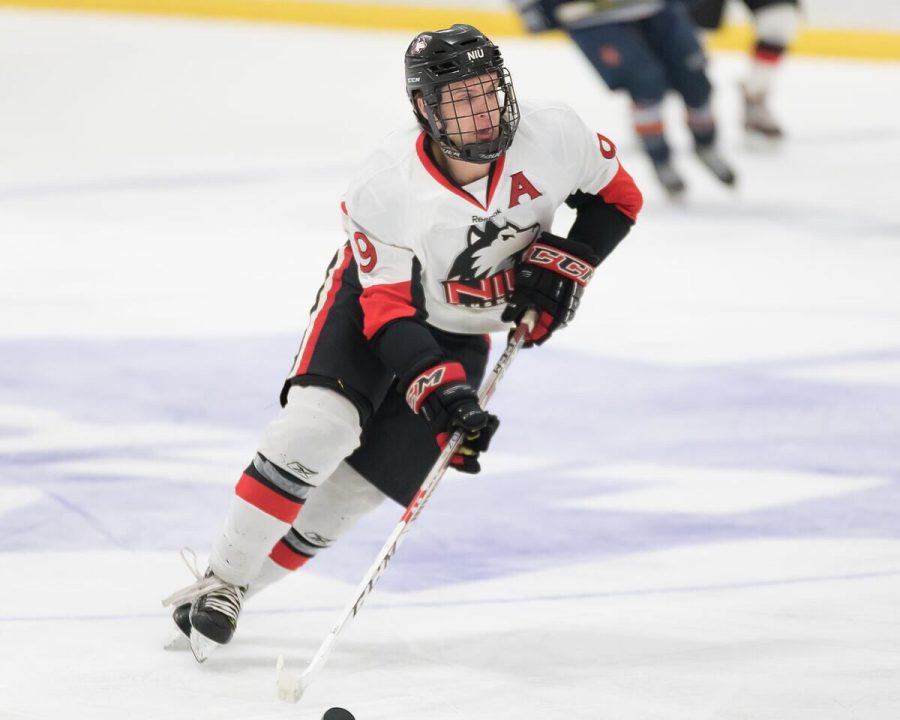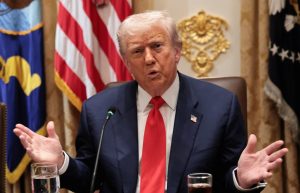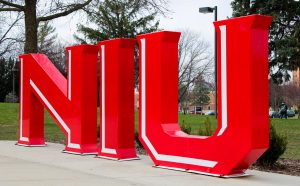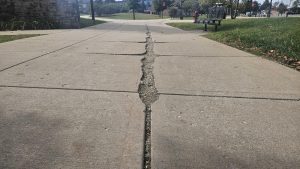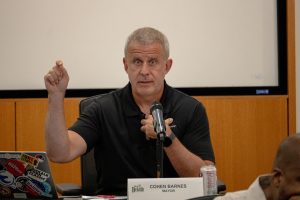Illinois lacks Division I hockey
October 10, 2018
Ice hockey’s popularity in Illinois has surged over the last decade with the Chicago Blackhawks’ dominant run, yet not a single NCAA Division I ice hockey team exists in the state. NIU needs more support for ice hockey, as it looks like a great fit for a NCAA Division I ice hockey team.
USA Hockey recorded a 33.2 percent increase in registered hockey players from 2006 until now in Illinois. This growth includes a range from adult leagues down to ages six and under.
NIU has an American Collegiate Hockey Association DII team which, in layman’s terms, means it has a club hockey team.
NIU’s ice hockey players pay about $3000 out of pocket to play hockey.
General Manager Ian Kalanges believes more support for the club from the university would lead to a rapid expansion of the program.
“I am always hoping that the school would acknowledge that hockey in Chicago and Illinois is huge,” Kalanges said. “I believe we have a great product on and off the ice, and with the backing of the university, the possibilities are endless. I have tried numerous times over the past five years to get the Athletic Director, Sean Frazier, out to a hockey game, but I understand his busy schedule. I truly believe we can make this program bigger and stronger than it already is.”
Frazier plans to attend a game this season, according to Kalanges, but could not be reached for comment.
Kalanges’ vision is no pipedream; Executive Director of College Hockey Inc. Mike Snee said Illinois has the sixth most NCAA ice hockey players of any state, despite no Illinois universities having NCAA ice hockey.
Illinois produces the most NCAA Division I ice hockey players of any state not home to a Division I program, according to a June 23, 2017, College Hockey Inc. article.
Snee said the primary concern from Illinois universities is financial.
“The cost and consideration of adding any sport is noteworthy,” Snee said. “You have all the expenses of operating the sport, scholarships and recruiting, in addition to Title IX considerations. It’s a task for any school, but we think it makes a lot of sense for certain schools in Illinois if those requirements can be answered.”
The financial burden could be considered daunting, but for an athletics program that is literally giving away money to students who attend home football games, its financial priorities may be misplaced.
Snee said Michigan, Minnesota, New York and Massachusetts are the top four states NCAA hockey players come from. Massachusetts and New York have 10 NCAA Division I programs each, Michigan has seven and Minnesota has five.
The Power Five conferences consist of the ACC, the B1G, the Big 12, the Pac-12 and the SEC; they are known as the most competitive collegiate sports conferences in the nation.
“It’s crazy [NCAA Division I ice hockey] hasn’t happened [in Illinois] already,” Snee said. Hockey is a sport that non-Power Five [conference] schools can experience [national] success in. None of the last three national champions belong to a Power Five conference.”
NIU participates in the Mid-American Conference, a non- Power Five conference, for most of its NCAA sports. Three teams in the MAC have NCAA Division I ice hockey: Bowling Green State University, Miami University and Western Michigan University.
All three are similarly sized to NIU, so size of university isn’t an issue. Snee said Bowling Green, Miami and Western Michigan are peers to NIU and have experienced success.
“For a school like Northern Illinois, ice hockey might be a sport they have the best chance of being successful nationally [with],” Snee said. “Miami was in the national championship game a few years ago; they are always a top-tier program. Bowling Green has won a national championship, and Western Michigan was ranked top six in the nation in preseason poll. Those are [NIU’s] three peer schools.”
It’s important to note Bowling Green and Miami don’t have the local fascination with ice hockey the Chicagoland area has experienced from the Blackhawk’s recent surgence.
The process of creating a NCAA ice hockey program should start with research, something the NHL is willing to help with and pay for.
The National Hockey League and National Hockey League Player’s Association will fund feasibility studies for universities to explore the possibility of potential programs, according to a June 23, 2017, College Hockey Inc. article. These feasibility studies measure everything a university would need to know before they decide whether it would be a good decision to create a NCAA ice hockey program.
When the feasibility study funding was announced, NHL commissioner Gary Bettman explained how NCAA Division I hockey helps grow the sport.
“Where high-level hockey is established, youth hockey interest and participation often follows,” Bettman said, according to a June 23, 2017, College Hockey Inc. article. “By expanding the footprint of elite hockey at all levels, we can inspire new players and parents to join the hockey family. By working to add programs at the Division I level, we hope to grow the game of hockey, both on and off the ice.”
The University of Illinois is in the process of using the feasibility study. Snee said the University of Illinois could take another couple of years before they make a decision to create a NCAA Division I program, one way or the other.
Snee said he knows NIU hasn’t conducted or inquired about the feasibility study, which would be conducted for them at no charge.
Former Blackhawks Ryan Hartman, Vinnie Hinostroza and Scott Darling are all Illinois natives . They were well into ice hockey before the Blackhawks recent success and were a part of some of that success. If a local university, like NIU, had an NCAA ice hockey program, some of these high-profile future Blackhawks may have ended up playing college hockey.
These are merely the Illinois natives that played for the Blackhawks; there are many more native Illinoisans throughout the NHL. If this wave of NHL Illinois natives came up before the Blackhawks success, the next wave will be much bigger and looking for a local university to play ice hockey at.
The next generation of collegiate ice hockey players from Illinois will be considerably larger as the generation that grew up with the Blackhawks’ dynasty ages. NIU is missing out on future NHL stars, and all of the attention they could bring, by not offering more support to ice hockey. The time is now.


